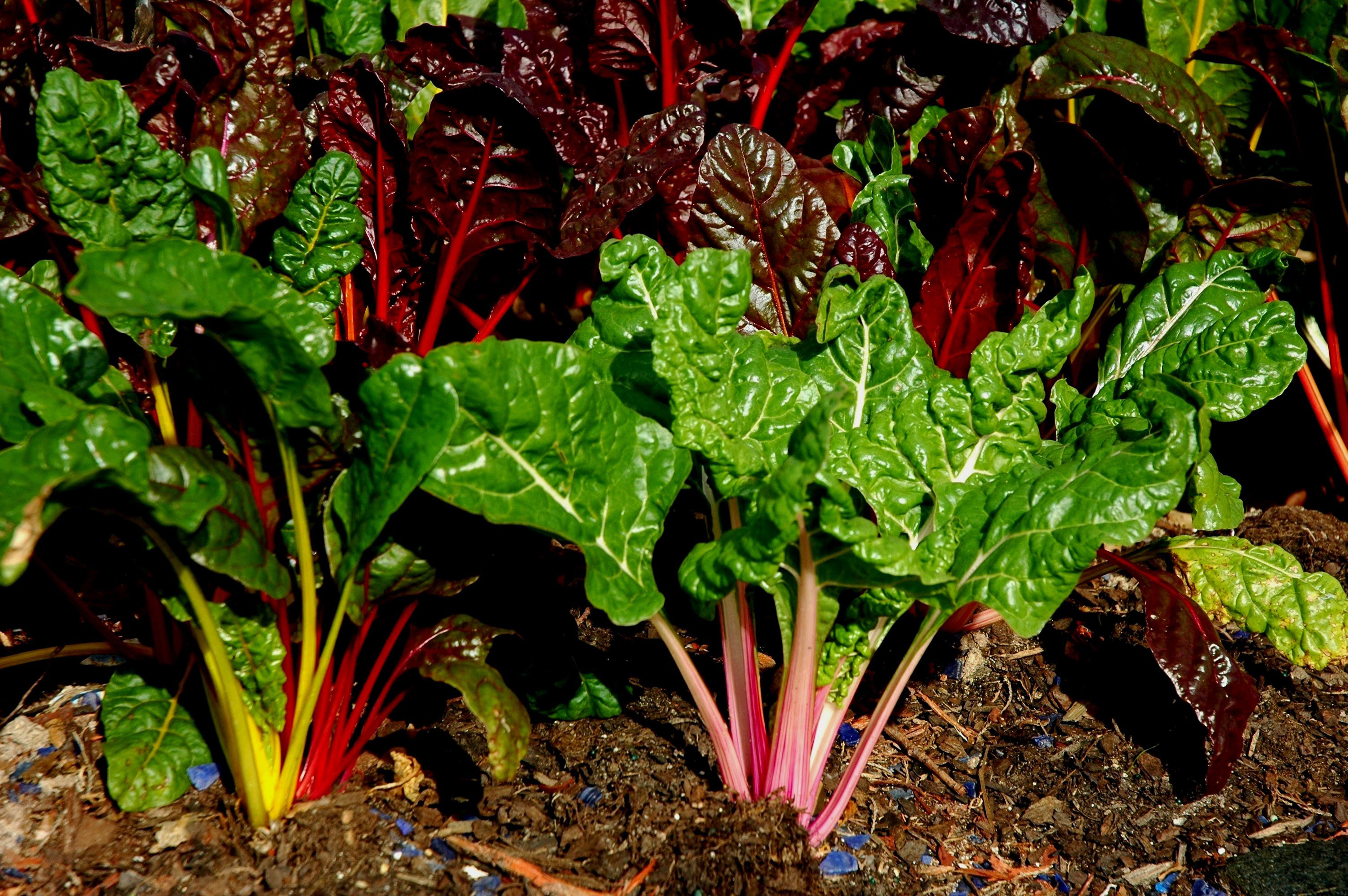Farm & Ranch
The Garden Guy: Swiss Chard – Ornamental, Wonderfully Edible

By Norman Winter
It seems wherever I go, I’m seeing Swiss chard. This showy cool-season plant, so-etimes called a beet without a bottom, is showing up in the landscape, in mixed containers and there it is available in the local grocery store.
Is it an ornamental or an edible, you might ask. The answer is both. Then you might wonder, do you eat it fresh or do you cook it? Again, the answer would be both.
It has been almost 20 years since the All-American Selections Bright Lights showed up on the scene. There was nothing to not love about this plant that had multicolored stems that were so ornamental looking yet provided that glorious glossy foliage that became a fresh spinach substitute. Swiss chard is known botanically as Beta vulgaris ssp. vulgaris, showing it is indeed a leafy beet.
Holy cow, now you look at a catalogue and you’ll see Bright Lights there but also single colors like Oriole, El Dorado, Magenta Sunset, Ruby Red, and the bi-colored Peppermint.
The same thing can be found at your grocer. You will probably have three to four varieties to choose from for your culinary artistry in the kitchen.
Swiss chard is ready to harvest baby green within 30 days or a mature harvest in 60. Cut or break off the outer leaves when they are 12 to 18 inches tall. You may cut them when they are smaller and more tender.
Like many plants, it seems production is lengthened by harvesting. The stalks can be cooked like asparagus. Cut the stems into two- or three-inch lengths and simmer in boiling salted water until tender. The leaves can be cooked or eaten fresh in tossed salads.
You may be thinking, perish the thought, you simply want the texture and color in the landscape or designer-styled container.
To read more pick up a copy of the December 2018 NTFR issue. To subscribe call 940-872-5922.
Farm & Ranch
Managing Show Cattle Through The Winter

By Heather Welper
Husband and wife duo, Heather and Calvin Welper, are the Co-Owners and Operators or Two C Livestock, located in Valley View, Texas.
The pair’s operation has a show cattle focus where they raise and sell purebred heifers of all breeds and club calf Hereford steers.
When it comes to show cattle, the Welpers know a thing or two including how to prepare for the cold winter months and the Texas major show season run.
To read more, pick up a copy of the November edition of North Texas Farm & Ranch magazine, available digitally and in print. To subscribe by mail, call 940-872-5922.

Farm & Ranch
Double M Ranch & Rescue

By Hannah Claxton, Editor
As the sun rises each day, so do the dozens of mouths that Meghan McGovern is responsible for getting fed. Rather than the sounds of a rooster crowing, McGovern hears the bellows and bleats of a variety of exotic deer, the chortle of kangaroos, the grunts of water buffaloes, and the chirps of a lemur.
Nestled against the banks of the Red River, the Double M Ranch and Rescue, with its high game fences and deer sprinkling the landscape,s its in stark contrast to the surrounding ranches.
“Having deer is kind of like eating potato chips- you can never actually have just one,” said McGovern with a laugh.
McGovern has several herds to take care of- fallow deer, axis deer, water buffalo, goats, and bison. In smaller numbers, there’s also a few kangaroos, a lemur, a potbelly pig, a pair of zebras, a watusi, and a few horses.
To read more, pick up a copy of the November edition of North Texas Farm & Ranch magazine, available digitally and in print. To subscribe by mail, call 940-872-5922.

Farm & Ranch
Acorn Toxicity

By Barry Whitworth, DVM, MPH
With the prolonged drought, most pastures in Oklahoma end up in poor condition. With the lack of available forage, animals may go in search of alternative foods.
If oak trees are in the pastures, acorns may be a favorite meal for some livestock in the fall. This may result in oak poisoning.
Oak leaves, twigs, buds, and acorns may be toxic to some animals when consumed.
To read more, pick up a copy of the November edition of North Texas Farm & Ranch magazine, available digitally and in print. To subscribe by mail, call 940-872-5922.

-

 Country Lifestyles2 years ago
Country Lifestyles2 years agoScott & Stacey Schumacher: A Growth Mindset
-

 Country Lifestyles8 years ago
Country Lifestyles8 years agoStyle Your Profile – What your style cowboy hat says about you and new trends in 2017
-

 HOME8 years ago
HOME8 years agoGrazing North Texas – Wilman Lovegrass
-

 Outdoor10 years ago
Outdoor10 years agoButtercup or Primrose?
-

 Country Lifestyles5 years ago
Country Lifestyles5 years agoAmber Crawford, Breakaway Roper
-

 Equine1 year ago
Equine1 year agoThe Will to Win
-

 Country Lifestyles9 years ago
Country Lifestyles9 years agoJune 2016 Profile – The man behind the mic: Bob Tallman
-

 Country Lifestyles8 years ago
Country Lifestyles8 years agoDecember 2016 Profile, Rusty Riddle – The Riddle Way




